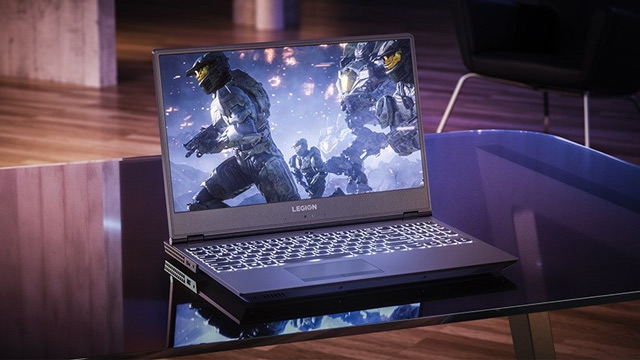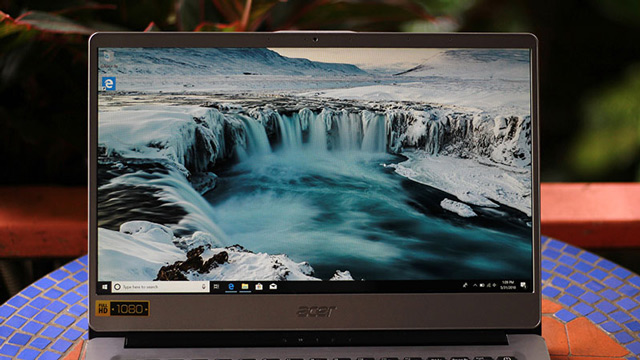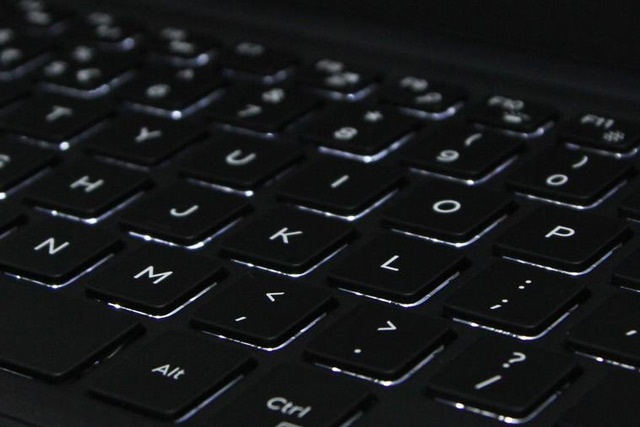Extend the life of Laptop batteries
In this tutorial, we will show you a little trick that can help your laptop battery work for years and hours between recharges.
Laptop batteries are the same as humans - eventually leaving the realm. And like humans, they don't follow Moore's Law - You can't expect batteries of the next year to last twice as long as this year. Battery technology has gradually improved over time (there is plenty of financial incentive for better battery types), but while these are still far away, we should not expect it. something groundbreaking in the near future.
Although your battery will eventually " leave ", proper care will make your battery last longer and can last until the time you need to replace the new netbook because of the Other problems.
In this article, I will show you some tips to help extend the life of the battery and how to keep the capacity of the battery longer between two charges, and you can work longer without to grid power.
Tips to extend battery life for laptops
- Do not leave the battery exhausted
- Keep the device working in a cool place
- Give the battery a break
- Use wireless mouse and keyboard
- Avoid multitasking, multimedia
- Know when to switch to sleep mode and when to hibernate
- Turn on battery saving mode on your device
- Reduce screen resolution and brightness
- Turn off the keyboard light on the machine (if any)
- Use headphones instead of external speakers or volume down
- Disable applications running in the background
- Clean up and defragment hard drives
- Upgrade components
- Misperception: Chilling batteries
- Misperception: Can rejuvenate an aging battery
- Wrong perception: Adding RAM is better for batteries
Do not leave the battery exhausted, save the charging and discharging cycle

'Squeezing to the last drop' for lithium batteries (the type of battery currently used for today's laptops) will make the battery worse. If it is only one or two times, there is no effect, but if you keep on letting this happen, your battery will go away very quickly.
Nearly all current laptop batteries are designed to handle certain charging cycles, typically 500 cycles or more. Basically, a charging cycle equals one full discharge to 0% and then recharges 100%. A 50% discharge and then a full charge will count as half the cycle. Over time, each charging cycle will reduce the battery capacity, meaning that the fewer times you discharge and charge the battery, the longer its lifetime.
Anyway, you should definitely not leave the battery completely depleted - although there are not many ways to do it. The explanation for this is because most modern laptops are designed to shut down before the battery is empty.
In fact, Vista and Windows 7 have a setting for this purpose. To see it, you can click Start, type power , and select Power Options. Click on one of the Change plan settings links , then it is the Change advanced power settings link. In the dialog that appears, find and open the Battery option . Then open the Critical battery level . The default setting will be 5%, this is a good setting and you just need to leave it as it is.
XP has no such inherent settings, although your laptop may have a vendor tool that can do this.
Keep the device working in a cool place
Temperature can damage the battery and affect every angle to it, so try to keep the laptop cool.
When you use a laptop, make sure the vents are not covered. Never work with a laptop on a pillow or blanket. If possible, place it on a frame with openings below so that air can circulate.
In addition, clean the vents with a dust pump or an air compressor. You can buy such things at computer stores. Perform dust pump cleaning only when the laptop is turned off. You can read more 8 things to do when cleaning your computer

Give the battery a break

If you do not use the computer for a long time, remove the battery from the device. Do not leave the battery too empty when not in use. When the battery is not used, it loses its energy over time. Therefore, only remove when the battery is at least half charged.
Never remove the battery when the computer is turned on, or even in standby or sleep mode; Disconnecting the battery at the time the computer is running may cause system failure or hardware failure. So just remove or install the battery again when the laptop is completely turned off or in hibernating mode.
If you have never removed your laptop battery and do not know how to remove it, check the manufacturer's documentation. (If not, you can find documentation online). The usual way to do this is to flip the laptop backwards, press and hold a button while replacing the battery.
Use wireless mouse and keyboard
Avoid multitasking, multimedia
If you don't have Internet access, you may not need both. Avoid using your computer for errands like editing photos or watching old videos until you use the mains. If you have to listen to a song, use an iPod or other music device instead.
Know when to switch to sleep mode and when to hibernate

You need to consider when you want to save energy by turning your laptop into Standby or Sleep mode and when you want to hibernate it.
There is a difference here. Standby mode in XP and Sleep mode in Vista will still keep the computer active, using less power, but less than the amount needed for normal use. Hibernate mode will be the most economical mode because it saves the state of the computer to the hard drive, then turns it off completely, so as not to use power.
However, Windows takes a long time - a few minutes - to switch in and out of hibernation mode. In that battery will discharge quite a lot and you can not work.
Standby mode of XP is not always effective. If the laptop doesn't work for more than half an hour, hibernate it. Otherwise, use Standby. Newer versions of Windows are more advanced in this regard with their Sleep mode. You don't have to worry about hibernate your computer unless you don't use it for two to three hours.
Turn on battery saving mode on your device
The first way you can do this is to activate the power saving mode on your computer. Most computer manufacturers now have integrated features on their products. When you start this mode, your computer will automatically change settings, the power saving mode will reduce the CPU clock to help save battery.
Reduce screen resolution and brightness

For students or office workers who often do not require too much detail, to save battery, you can reduce the computer screen resolution to a basic level (1,366 x 768) or also may be lower depending on the size of your laptop screen.
Besides screen resolution, setting the screen brightness should also be noted, so leave the brightness at a moderate level of 50% - 60%, or at the level of your eyes that can look good without being bothered. Because if the screen light is higher, it means that your laptop battery will have to work harder. The higher the percentage (%) of the screen, the higher the level of nits increases.
Turn off the keyboard light on the machine (if any)

In addition to the screen, the keyboard lamp is also the main cause of your computer battery having problems. If you do not need to turn on the keyboard light when using it, it is best to turn it off to save a lot more battery.
Use headphones instead of external speakers or volume down

If you want to listen to music or watch movies instead of opening with a speaker on your computer, you should use a headset or Bluetooth speaker, this will help you hear better sound without affecting the device battery.
In the absence of headphones and a comfortable working environment, you want to listen to music, download it instead of listening to it online. Finally, let the volume be at a level sufficient to hear but not too loud.
Disable applications running in the background
In the right corner of the screen, select to remove unnecessary Windows startup applications. And when you do not use some software such as Skype, Yahoo, Antivirus, Google Desktop search, . should also be turned off to help save battery power for laptops.
Clean up and defragment hard drives

HDD hard drives on computers often contain a lot of data, but after a long time of using the hard drive will gradually become fragmented, this makes your data difficult to avoid defragmenting the hard drive. So, in order to read and complete this file, the computer has to work a lot harder and thus consume more energy.
To remedy this situation, you should regularly clean old files, delete unnecessary files and clean up junk software, this will help pull the laptop battery to last longer.
Upgrade components
If possible, you can upgrade components for your device such as replacing the hard drive. Upgrading your device will help your device consume very little power and high performance.
Similar to the amount of RAM. Recommended for computers running Windows 32 bit is 2 GB and Windows 64 bit is 4 GB. If this minimum requirement is not met, the computer will automatically retrieve the hard drive as a replacement RAM.
As a result, more hard-working, fragmented hard drives occur, and lead to battery consumption bluff. So, upgrade more RAM, keep the system more stable, run faster and increase the battery life of your laptop.
Misperception: Chilling batteries
Some people advise you to store it in the refrigerator, put it inside a feather bag. While you keep in cold temperatures, what you get will be a wet battery and condensation is a real danger in the refrigerator. Instead, you should store it in a desiccator at room temperature.
Do not leave your battery for too long without exercising or completely empty. If you have left without using the battery for more than two months, install it back on your computer and use it within a few hours, then remove it again for storage.
Before taking the laptop on the road, need to reinsert the battery and charge it within a few hours before unplugging it. Allow the battery to be fully charged before unplugging the grid.
 Misperception: Can rejuvenate an aging battery
Misperception: Can rejuvenate an aging battery
This is impossible. You cannot make an old lithium chamber with more charge than the amount it stores currently.
However, if your battery is quickly caught off guard, or if your laptop has a problem pointing out how much power has been used, you can " fix the gas meter " for the battery, from there. It can read more accurately.
If you suspect that the battery cannot tell whether it is charged or not, run it through two cycles. Discharge all its energy (this is an exception with the principle of not draining the battery mentioned above), reload it to 100% and then repeat the above cycle again.
But how will you discharge your battery if Windows doesn't allow you to do it? Don't worry about the settings introduced above in Windows. They are uncertain (because you may forget to change them back), they may not read correctly and may not allow you to set the battery level at 0%. (If you leave that option unknowingly, you have harmed the operating system).
Instead, unplug your grid and let the laptop run (you can do it now if you want) until it automatically hibernate. Then restart the computer again and go directly to the system installation program.
I can't show you exactly how to get in here; Each computer has different points. Turn on the computer and search for text on the screen (one of the first lines you see) says something like 'Click the X key to enter Setup'. Immediately press that designated key.
It may take a few times to get the full time count. In case there is not enough power to allow the computer to boot, plug in the mains power until you enter the setup program, then unplug the power.
Let the netbook run until it is turned off. It may take a long time (45 minutes on my laptop); Because setup uses a lot less energy than Windows.
When the computer shuts down, plug in the mains power, then wait a few hours to restart Windows and make sure you charge the battery.
Repeat this process once or twice.
With good luck and proper care, your battery will still be useful until you look for a new laptop.
Wrong perception: Adding RAM is better for batteries
It is true that more RAM means less access to hard drives and hard drives using a lot of electrical power. But RAM also uses energy equally.
See more:
- How to recover and improve performance for battery-powered laptop batteries
- Notes when using to reduce laptop battery bottle level
- How to check the status of using laptop battery running Linux
- How do I know if my laptop battery is bottled or broken?
You should read it
- 8 tips to extend laptop battery life
- 5 simple ways to extend laptop battery life
- How to discharge laptop battery properly and effectively
- How to recover and improve performance for battery-powered laptop batteries
- Instructions on how to improve battery life for laptops
- How to adjust laptop battery life after using time
- Optimize laptop battery life
- Increase laptop battery time
- Notes when using to reduce laptop battery bottle level
- How to save your laptop battery with AutoPowerOptionsOK
- Battery saving tips for laptops running Windows
- Why does laptop battery never reach the same amount of time advertised?
May be interested

Unexpected uses of laptop webcams

Top 10 best mini laptops 2018

Methods to expand storage memory for computers quickly

Decode the specifications on the laptop

How to install the network driver with the All Main Ethernet Controller

'Relieve heat' for laptops with Thermaltake's Massive 14² heat sink CL-N001-PL14BU-A







 Slow charging does not help extend battery life
Slow charging does not help extend battery life Use laptop batteries most effectively
Use laptop batteries most effectively 8 tips to extend laptop battery life
8 tips to extend laptop battery life How to increase and extend the battery life on the Laptop effectively
How to increase and extend the battery life on the Laptop effectively Learn about batteries for laptops
Learn about batteries for laptops Use batteries for laptops better
Use batteries for laptops better